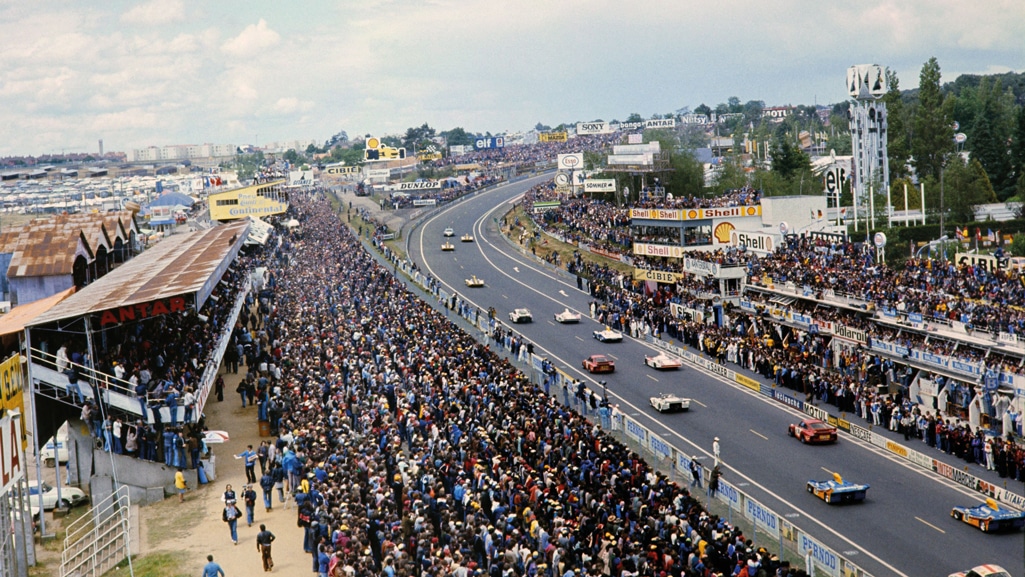100 Years of Legends: Le Mans book review
Gordon Cruickshank augments his fact-crammed brain with this dip-in-and-outable celebration of the Le Mans 24 Hours

Fancy a fact deluge about the Le Mans enduro? 100 Years of Legends is the book for you
Getty Images
Planning a book covering this significant century can’t have been easy, but this quadruple-authored book takes a bold approach, dividing into multiple short sections livened by bold graphics and diagrams. Visually dull it isn’t.
You’d expect sections on the drivers and manufacturers, but here you also get individual cars including the wacky ones, technological experiments and advances and much information about the structure of the event – changing regulations, circuit alterations, race organisation – and of course in among all that are the actual results and records. It’s a big book but not unwieldy, and the varied graphics make it very tempting to dip into. On one page there is a discussion about pole positions (only since 1963); on another the “curiosities” – smallest engine to enter (Simca, 1937), Nardi’s catamaran, the pugnacious Mini Marcos which despite its 1275cc finished 15th – and dead last.
Elsewhere there are sections on tyres, including wins by make, driver clothing, and American entries. I found myself getting quite nerdy over the ‘24 Hours in figures’ pages: I expect I’ll bore everyone in the office by saying “did you know?” – that 60,000 gallons of fuel are delivered to the circuit or that 40 doctors and three X-ray operators attend.
More seriously, the authors list the 2015 revenue as £19m, almost half from marketing and venue rental and only a third from ticket sales. As you see, it’s by no means a decade by decade history. The four co-authors all have long associations with the famous endurance test, and it’s published in collaboration with the Automobile Club de l’Ouest who have organised the event since it was first raised as a excitingly daft idea in 1922. That story (previously mentioned in Richard Williams’ centenary book) is aired here, alongside other racing at the time and mention of “other shrines of motor racing” – which doesn’t include Brooklands!

Speaking of legends, here’s Tom Kristensen, centre
Getty Images
The great drivers get their biographies, topped by ‘Mr Le Mans’ Tom Kristensen, but so do rookie winners and there is a section on female drivers. We are still waiting to see Odette Siko’s fourth place bettered by another woman – and that was way back in 1932.
All in all it’s an inventive and inviting way to tackle such a varied and extensive subject – for example, one section is ‘24 words about the 24 Hours’ offering you brief outlines describing, to pick just a few, Garage 56, categories, hospitality, the stints that drivers endure between changes and those thrilling but dangerous (perhaps thrilling because they’re dangerous) Le Mans-style echelon starts which tested a driver’s sprinting ability as well as his skills at the wheel. And those don’t go back to the beginning: the first couple of races started with a two by two grid just as we have in Formula 1 today.
There must have been some major brainstorming sessions to decide how to chop up this rich story. I’ve not seen many other books that describe the effect on Le Mans town of this petrol-fuelled jamboree, but here are photos of the Grand Parade showing off the drivers to the crowd, the Walk of Fame pavement plaques that last year’s winners unveil before the start of each race, and scrutineering, always a popular session which takes place in the centre of town, giving spectators a chance to see the cars up close even if they aren’t going to buy a ticket.
One downside of the sectional presentation is that it’s not always easy to track down information; I wanted to remind myself when maximum driving hours regulations came in, but though I knew I had seen that box I couldn’t quickly find it again. Still, that’s a minor cavil compared to the lively way the book comes across.
100 Years of Legends
Denis Bernard, Basil Davoine, Julien Holtz & Gérard Holtz
Evro Publishing, £70
ISBN 9781910505885

